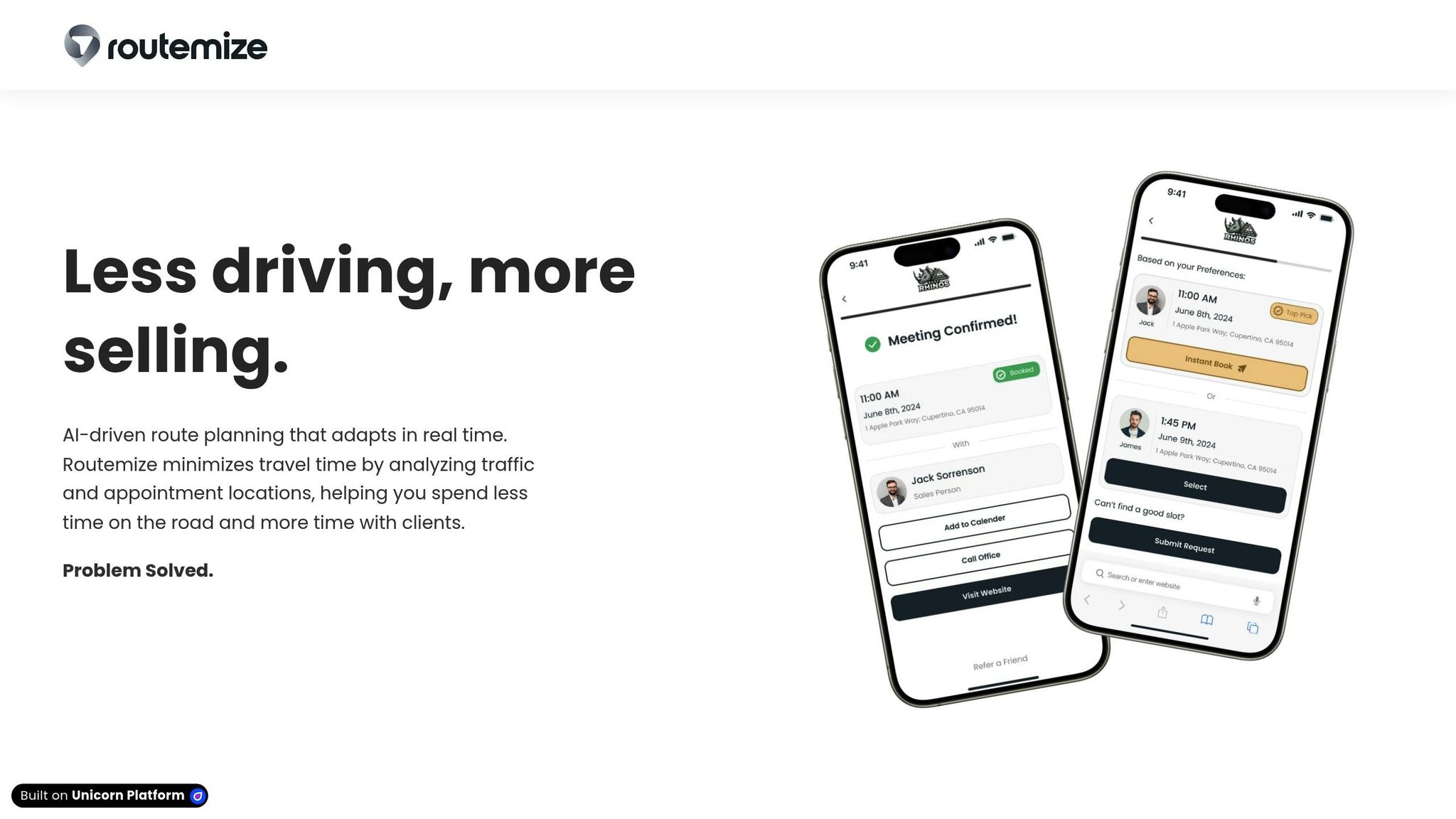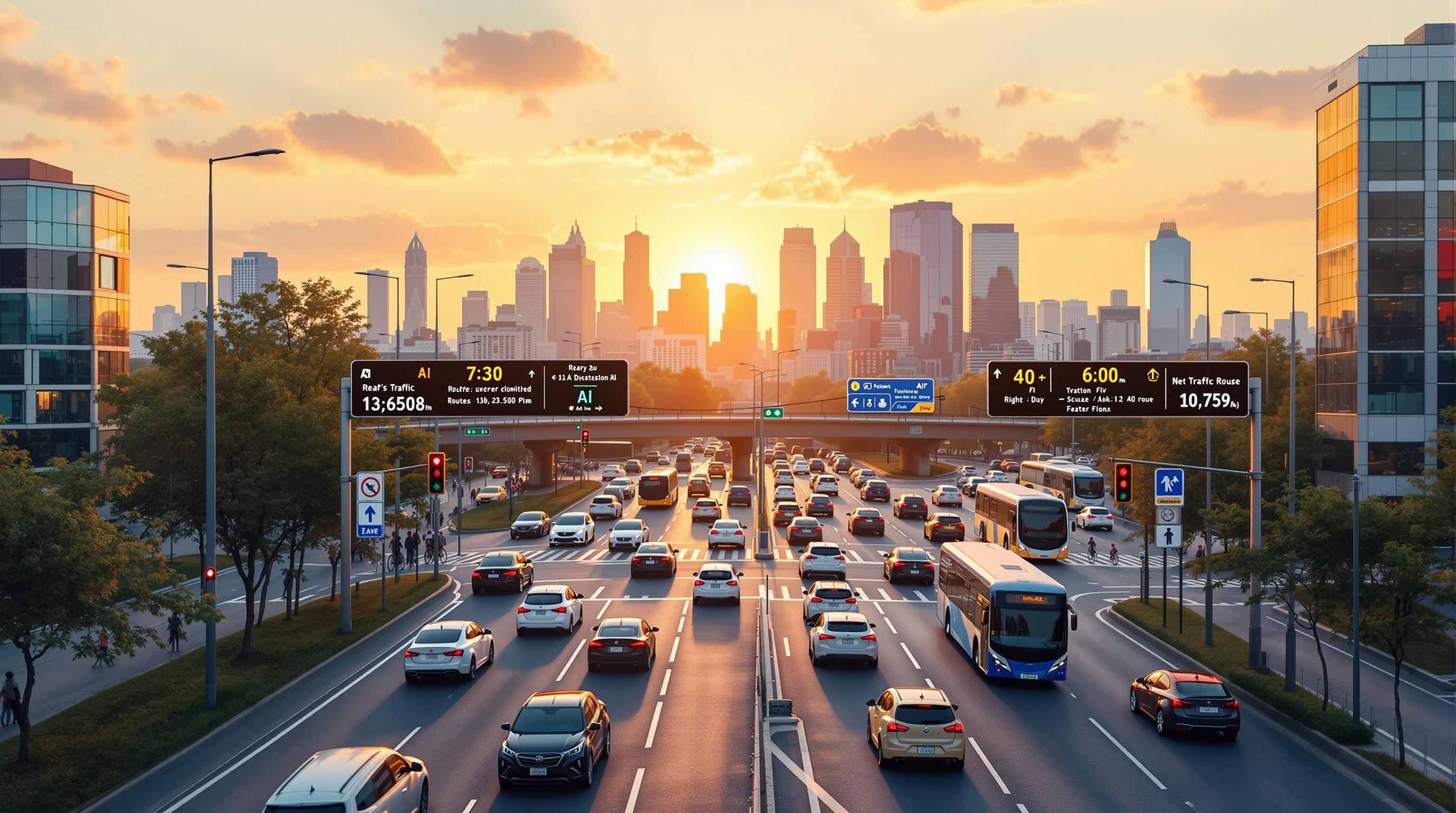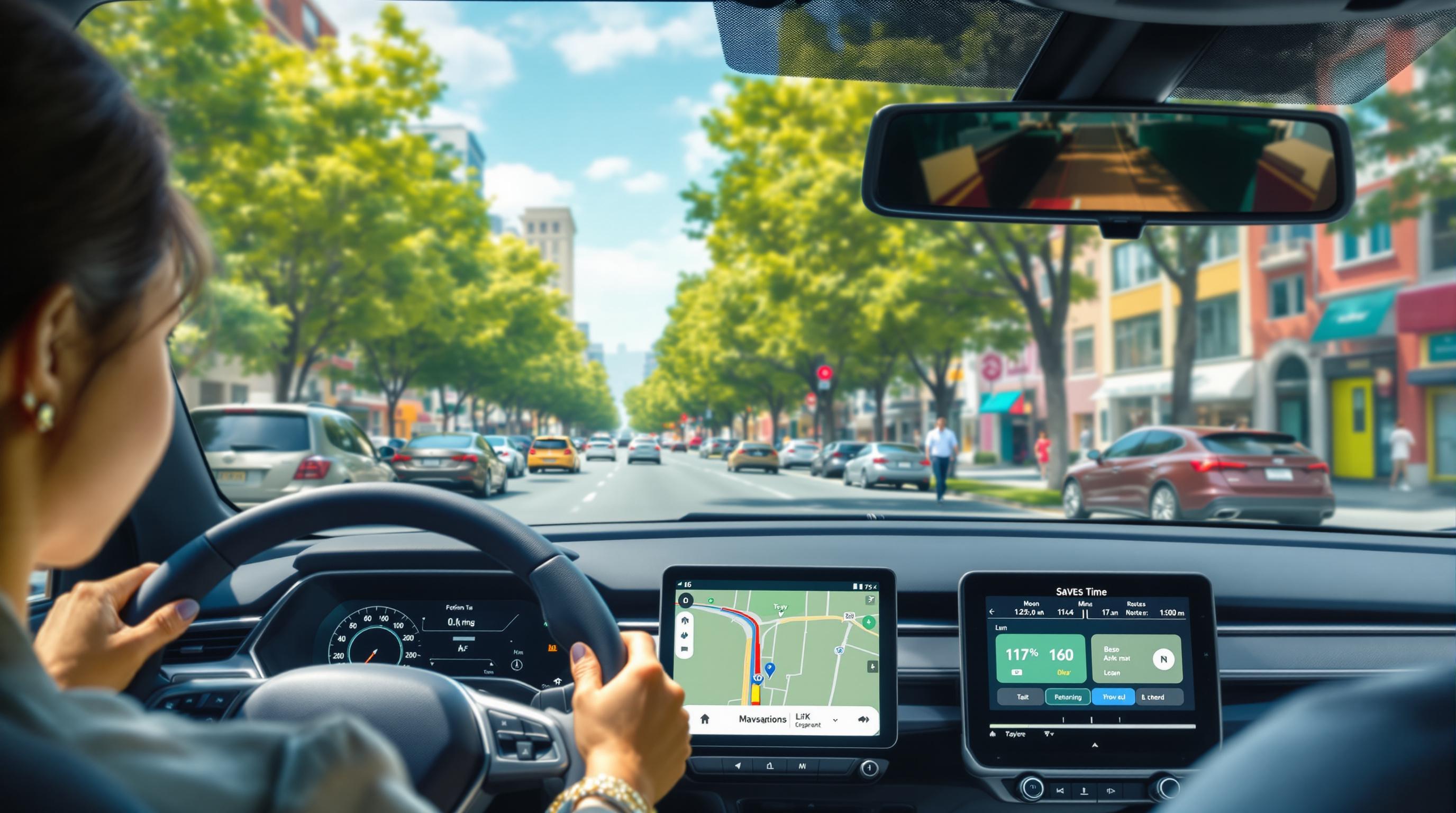Dynamic traffic rerouting uses real-time data to instantly adjust navigation routes when conditions change. It helps drivers avoid delays, save time, and reduce costs. Here’s what you need to know:
- How It Works: Combines AI, GPS, IoT sensors, and data analytics to monitor traffic, weather, and road conditions.
- Benefits:
- Avoids traffic jams, road closures, and severe weather.
- Saves fuel and reduces vehicle wear and tear.
- Improves arrival times and customer satisfaction.
- Who Uses It: Delivery drivers, emergency responders, and field teams rely on it for faster, more efficient travel.
Ready to improve your routes? Tools like Routemize make it easy to implement dynamic rerouting for your team.
Dynamic Routing for Dummies: An Easy-to-Understand ...
How the System Works
Dynamic traffic rerouting relies on a combination of cutting-edge technologies to process live data and make route adjustments on the fly. Here's a breakdown of the four key technologies behind it:
Core Technologies
- AI: Algorithms evaluate traffic patterns and anticipate potential disruptions.
- GPS: Provides accurate vehicle location and tracking.
- IoT: Sensor networks keep tabs on traffic flow and road conditions.
- Data Analytics: Combines all inputs to suggest the best possible routes.
Up next, we'll walk through the process of how routes are updated in real time.
Advantages for Users
Dynamic traffic rerouting offers clear benefits for professionals who rely on timely and efficient travel.
Time Management
This technology keeps an eye on road conditions to help save time. Here’s how it works:
- Avoids unexpected traffic jams by finding alternate routes
- Reroutes around road closures as they happen
- Adjusts paths for severe weather in real time
- Helps stick to schedules, even with unexpected delays
Lower Costs
Smarter routes mean saving money in several ways:
- Lower fuel usage thanks to shorter, smoother trips
- Reduced vehicle wear and tear, leading to fewer repair costs
- Less overtime pay, as employees spend less time stuck in traffic
These savings also help vehicles last longer and stretch out the time between maintenance.
Improved Client Experience
Dynamic rerouting enhances customer service by making routes more precise and communication clearer:
- More accurate arrival times, building trust with clients
- Automatic updates keep customers informed about delays or changes
- Easily handles last-minute changes without throwing off the day’s schedule
- With tools like Routemize, AI-powered adjustments ensure professionals spend more time with clients and less time driving
Next, we’ll dive into how companies are using dynamic rerouting in practical, everyday situations.
sbb-itb-7020db0
Current Uses and Examples
Real-time rerouting helps streamline tasks for field staff, emergency responders, and AI-powered systems.
Professional Services Examples
Delivery drivers use real-time data to prioritize packages and navigate traffic, ensuring routes are as efficient as possible. Similarly, sales representatives plan their appointments to reduce travel time, allowing them to fit in more stops with less driving.
Emergency Services
Emergency crews rely on live traffic updates to find the quickest routes for ambulances and strategically position fire units, ensuring they can respond promptly when every second counts.
Routemize Features

Routemize’s beta platform takes these capabilities a step further. It tracks live traffic conditions, organizes stops to save time, and automatically adjusts routes to avoid delays. This makes it an invaluable tool for anyone needing efficient route planning.
Setup Guidelines
To implement dynamic traffic rerouting for field teams and service providers, follow these steps.
Implementation Steps
Start by assessing your current setup, including mobile devices, GPS capabilities, internet access, and cellular coverage. Check if your system can handle real-time traffic feeds, GPS tracking, and other data sources. Configure your routing platform using the onboarding resources provided by Routemize.
Staff Training
Create practical training sessions to help your team get comfortable with the platform. Focus on navigating the interface, understanding real-time updates, and practicing route adjustments using simulated scenarios.
System Updates
Plan regular reviews to check route efficiency, data accuracy, and system performance. Collect user feedback to identify areas for improvement. Make sure to install software updates promptly, verify data connections, and enable automated alerts for critical issues to avoid service interruptions.
Conclusion
Key Takeaways
Dynamic traffic rerouting leverages real-time data and AI to adjust routes on the fly. This approach helps minimize delays, save time and money, and improve overall customer experience. To make the most of these advantages, consider the steps outlined below.
Steps to Move Forward
Sign up for Routemize's beta program to explore early access features, test their capabilities, and share your insights. Start integrating AI-powered route optimization into your existing systems to enhance efficiency, cut down travel time, and improve customer satisfaction.


